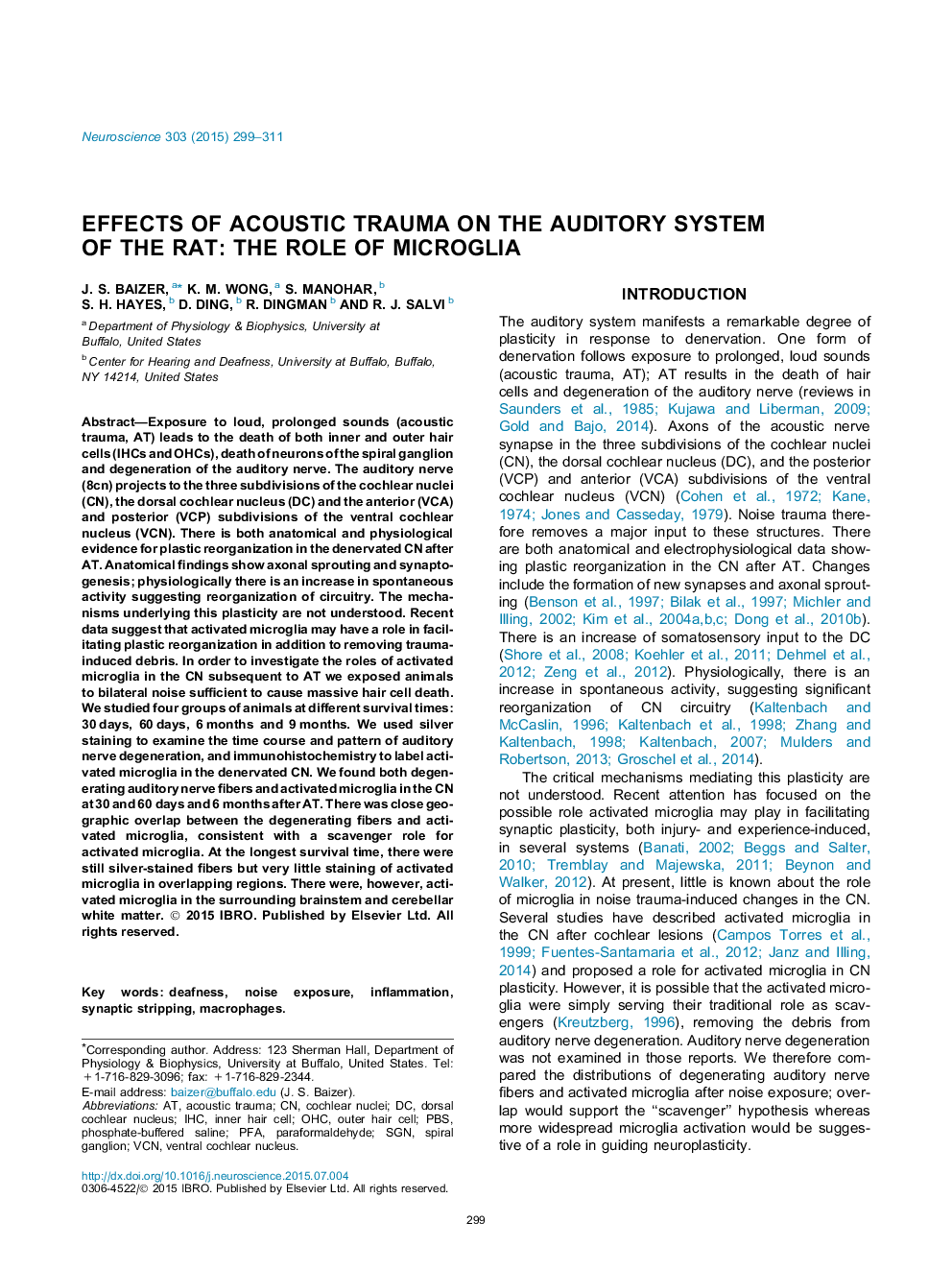| Article ID | Journal | Published Year | Pages | File Type |
|---|---|---|---|---|
| 6271859 | Neuroscience | 2015 | 13 Pages |
â¢We studied auditory nerve degeneration and microglia activation after bilateral noise exposure destroying hair cells.â¢At survival times of 30 and 60 days silver-staining showed many degenerating fibers in the cochlear nuclei.â¢Degenerating fibers were also seen at 6- and 9-month survival times.â¢Immunostaining using an antibody to OX6 showed activated microglia in the cochlear nuclei with a similar distribution.â¢Activated microglia in the cochlear nuclei have a major role as “scavengers”.
Exposure to loud, prolonged sounds (acoustic trauma, AT) leads to the death of both inner and outer hair cells (IHCs and OHCs), death of neurons of the spiral ganglion and degeneration of the auditory nerve. The auditory nerve (8cn) projects to the three subdivisions of the cochlear nuclei (CN), the dorsal cochlear nucleus (DC) and the anterior (VCA) and posterior (VCP) subdivisions of the ventral cochlear nucleus (VCN). There is both anatomical and physiological evidence for plastic reorganization in the denervated CN after AT. Anatomical findings show axonal sprouting and synaptogenesis; physiologically there is an increase in spontaneous activity suggesting reorganization of circuitry. The mechanisms underlying this plasticity are not understood. Recent data suggest that activated microglia may have a role in facilitating plastic reorganization in addition to removing trauma-induced debris. In order to investigate the roles of activated microglia in the CN subsequent to AT we exposed animals to bilateral noise sufficient to cause massive hair cell death. We studied four groups of animals at different survival times: 30Â days, 60Â days, 6Â months and 9Â months. We used silver staining to examine the time course and pattern of auditory nerve degeneration, and immunohistochemistry to label activated microglia in the denervated CN. We found both degenerating auditory nerve fibers and activated microglia in the CN at 30 and 60Â days and 6Â months after AT. There was close geographic overlap between the degenerating fibers and activated microglia, consistent with a scavenger role for activated microglia. At the longest survival time, there were still silver-stained fibers but very little staining of activated microglia in overlapping regions. There were, however, activated microglia in the surrounding brainstem and cerebellar white matter.
